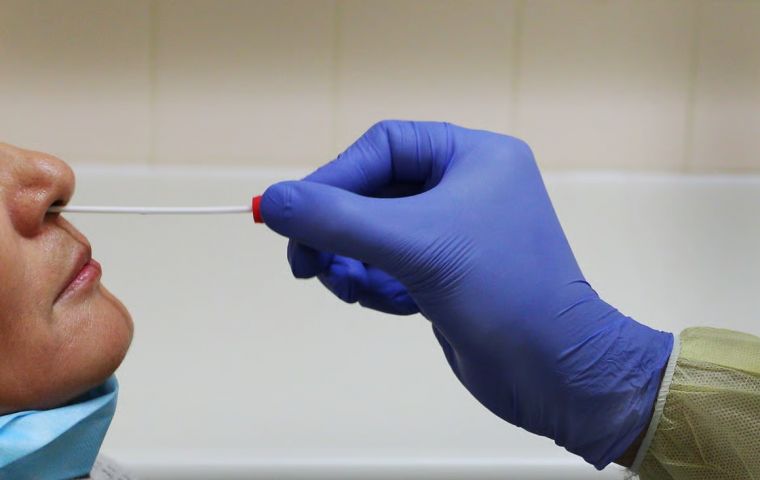MercoPress. South Atlantic News Agency
Fears of another outbreak of Covid 19 in Europe this coming winter
 Two new variants of the virus are on the rise worldwide. One of them is BA.2.86, also known as Pirola, WHO has classified as a “variant under monitoring.”
Two new variants of the virus are on the rise worldwide. One of them is BA.2.86, also known as Pirola, WHO has classified as a “variant under monitoring.” The COVID-19 pandemic is officially over and the World Health Organization has declared it finished. Other news items have long superseded the coronavirus in the headlines. But in several European mainland countries, there is concern since the number of recorded infections has been rising in recent weeks
This is — still — no reason for concern, according to Professor Stefan Kluge, the director of the Clinic for Intensive Care Medicine at the University Medical Center Hamburg-Eppendorf.
“At the moment, we are treating 182 patients with COVID-19 in intensive care in Germany, half of those because they have pneumonia caused by the virus. That is 1% of all patients in intensive care. It is a very stable situation, even though we have observed more infections among staff and patients in recent weeks.” However, the shortage of skilled staff in hospitals could become a problem, especially in winter, Kluge said.
However currently two new variants of the virus, which are on the rise worldwide. One of them is BA.2.86, also known as Pirola, which the WHO has classified as a “variant under monitoring.” It is spreading quickly and reminding scientists of the early days of the Omicron variant. Discovered in Denmark in late July, it has already been detected in Switzerland, the US, Israel, and the UK. Because of this, Britain has brought forward its immunization schedule and in Israel people being admitted to hospital wards need to undergo a PCR test for the virus.
The variant has not yet been detected in Germany, according to the country's agency for infectious diseases, the Robert Koch Institute, but EG5, also known as ERIS, has. The sub variant of the hitherto predominant Omicron has displaced other variants and is responsible for about half the current infections in Germany. In the US, Eris is currently leading to more hospitalizations, with the WHO assuming this “variant of interest” will soon dominate worldwide.
This is why the situation could become critical in some parts of Europe this coming winter, said Professor Leif Erik Sander, Director of the Department of Infectious Diseases and head of the Research Group on Personalized Infectious Medicine at the Berlin Institute of Health at the Charite hospital (BIH): “Especially in pediatrics, in children's medicine, it will lead to bottlenecks relatively quickly again, including in the emergency departments. There can then be real problems in the delivery of care, especially in regions where the density of available hospital beds is perhaps not so high.”
That is because, along with COVID-19, the respiratory syncytial virus (RSV) also tends to be prevalent in the colder seasons. According to European Union (EU) medical authorities, this respiratory illness is mild most of the time, but for small children, babies, and vulnerable older adults it can be life-threatening.
Professor Sandra Ciesek, head of the Institute of Medical Virology at the University Hospital Frankfurt, is sure that many Germans will contract COVID-19 again this winter. “Most of them will stay home sick for a week because they simply have a fever and cold symptoms. So long as Omicron is in circulation, I see no risk that it would become necessary again, for example, for the government to impose restrictive measures.”
It is primarily people aged over 60 with certain preexisting conditions, care workers and health personnel, as well as close contacts of at-risk patients who should receive a booster vaccination to weather the winter well, the Standing Commission on Vaccination at the Robert Koch Institute (STIKO) has said. The general guidelines are that at least 12 months should have passed since the previous vaccination or infection.




Top Comments
Disclaimer & comment rulesCommenting for this story is now closed.
If you have a Facebook account, become a fan and comment on our Facebook Page!